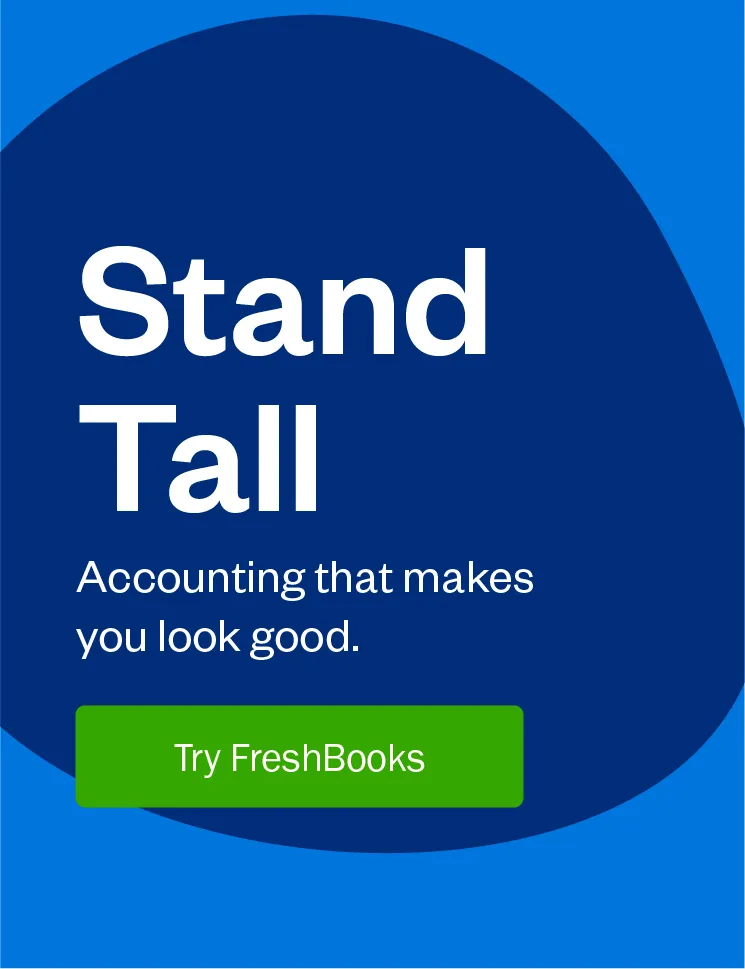Do you under-promise and over-deliver? It might be a good part of your strategy, but doing it the right way is important to your success. If you don't properly estimate the scope of work you might be over-delivering to your own detriment.

When it comes to planning out your month and taking stock of your time and resources vs. how much work your clients need, it’s important to set fairly realistic expectations. However, the old adage “under-promise, over-deliver” is a tempting prospect if you can work it into your schedule and budget.
Customers are always receptive to a good surprise when it involves delivering a little bit extra on their project. While under-promise and over-deliver can also come across as somewhat negative, you should definitely focus more on the over-deliver part of this old saying while setting realistic expectations with your clients. Constantly over-delivering and over-promising would strain your services, resources, and books and isn’t a primary part of running a successful business. Still, it is excellent for client relationships and retention.
Table of Contents
4 Easy Ways to Under-Promise and Over-Deliver
1. Deliver Ahead of Schedule
If you run a service-based business, you know a thing or two about customers and urgency. It’s not uncommon for people to want something done yesterday, so speed can be a key factor in delivering work. And obviously, no client is happy when work is delivered late.
A good rule to follow is to clearly communicate deadlines and deliverables leading up to those deadlines, especially if you have a longer-term project on your hands. Then, if you have the resources and time to do so, you can easily deliver ahead of schedule while maintaining the same quality your customers expect.
Delivering work early might mean shuffling other work around a little, but it can be done without costing you anything in terms of money or resources. On top of that, it’s an easy way to really impress your stakeholders and clients.
Just be sure to point out to your clients that you are delivering work ahead of schedule because they might not even realize it—it’s okay to toot your own horn once in a while!
2. Find Ways to Surprise Your Customers
There are many ways to surprise your customers for free, but you can also tack some extra dollars into your budget without feeling it in your pocket (rule of thumb is 5%).
If you’ve ever had a real estate agent, you’ve likely received a gift or two from them upon closing your home or on holidays thereafter. They do this to keep themselves top of mind in a positive way because they rely so heavily on referrals for new business.
Items like a gift certificate to your business or another local business on their birthday, holiday cards, and branded swag won’t break the bank and will make your customers feel valued.
3. Be Uber Responsive
One thing many small businesses don’t think about (likely because they don’t have time) is customer service. One easy way to impress your customers and set high expectations is to respond quickly to voice mail, email, and other messages.
Whether an urgent message from an existing customer or a cold inquiry from a potential customer, a quick response sets a positive tone for your relationship. Setting a supportive tone for your organization will plant the idea that your company cares about its customers and won’t ghost them if they have a question or need information.
4. Promise X and Give Them X and Y
This definitely doesn’t mean working for free or giving away your work for free. However, there are ways to do this for a customer without breaking your budget.
For example, if you’re a graphic designer designing a logo for a client, show them your design journey. If you said you would deliver three logo options, show them some of your exploratory designs as well. Be sure to tell them that you have three favorites but also had a few extra concepts you thought they would be interested in above and beyond what you discussed. Let them know it’s no additional charge, and they will be delighted to have more to look at. Of course, there’s the caveat of providing too many options and giving them choice paralysis, but that’s another blog post altogether.
This is just one example, and every business is different, so think of one way to work it into your business to sprinkle on a little extra unexpected value for your customers.
On the Contrary, Are You Constantly Over-Delivering and Underestimating the Scope of Your Work?
On the flip side of over-promise, under-deliver is to estimate and plan out your work correctly. If you always over-deliver on projects and take pride in going the extra mile to “wow” your clients, that’s great. But, if it’s not by choice, your first instinct is probably to point fingers at your client and say, “It’s scope creep!”
The truth? There may be a bigger problem, and it’s not your client’s fault but yours: You’re underestimating the work involved and not correctly scoping projects.
But, Why Are You Underestimating?
While it’s entirely possible you’re underestimating by mistake, something else may be at play. Something many small business owners have fallen victim to.
This “something” could be the anxiety about finding new clients and retaining existing ones. You may have an irrational fear that someday the phone will stop ringing, and you’ll be without a single client. So, when an opportunity comes knocking, you want to say “yes” to it. You want to land every piece of business at whatever cost.
The problem? It’s easy to become blinded by landing the business that you don’t take the time to estimate the work involved or, worse, end up competing only on price, with the same result: An estimate that’s skimp on the details.
I totally get this, as I’ve been in this position. You likely feel that all those extra details in the estimate are additional hurdles for your client, which reduce your chances of winning the business—so you omit them.
However, you’re not doing yourself any favors: Not only is there no guarantee you’ll enjoy working with this client, but you could become buried in a mountain of work. There’s nothing more frustrating than starting a project and agreeing on a price, only to see the work pile up as you progress through it.
This anxiety also causes you to go the extra mile to retain clients. And, why wouldn’t you? Your client will love you, and you’ll become irreplaceable, right?
While this mindset is totally understandable, you’re only shooting yourself in the foot: Your clients will learn to expect it, and you’ll undersell yourself and leave a lot of money on the table. You may even begin to resent your client, which can strain your working relationship. The good news is there’s a solution to this madness—here are four ways to stop you from underestimating.
4 Ways to Stop Underestimating
1. Create a Detailed Estimate or Proposal
Don’t skimp on your estimate and proposal—ensure it includes all the essential details contributing to project success. While a proposal and estimate differ, with a proposal used for winning a client’s business and an estimate used for new projects with existing clients, you’ll typically want to include the following in both:
- The scope of work with a detailed breakdown of all the services
- Timelines for project completion and milestones
- Costs, preferably framed as an investment for the client
- Exclusions and terms
- Client input required for the success of the project—a brainstorming meeting at the beginning of the project will help with this
By being clear on the above, you’ll have a detailed picture of what’s required and reduce the chances of over-delivering.
Tip: If, while putting together the estimate or proposal, you discover there are several ways to deliver the project—all of which require different amounts of effort, services, and costs—ensure you detail this with different packages at varying price points. This ensures you’re giving the client a choice and informs what YOU need to do.
2. Walk Your Client Through the Proposal and Estimate
Many business owners mistakenly send a proposal or estimate without going through it with their clients. They wrongly assume that a client who accepts it has read it when the opposite may be true.
The problem is that you open yourself up to disagreements and conflicts later. What if the client assumes a specific service is included when it isn’t? Or, what if you think the client wants something when they don’t—and you end up doing all that extra work for nothing?
The point is that going through the proposal together ensures you’re both on the same page and that the scope of work is adequately detailed.
Besides ensuring your clients understands the nuts and bolts of the work, it’s also important to clarify the value your service will provide. If they understand the value, they’ll feel more comfortable parting with their money and giving you the business over another lower-cost provider.
3. Use Other Projects as a Benchmark
When creating an estimate and moving through a project, look at other projects where you nailed the brief and did what was expected of you, and ask yourself:
- What did I include and exclude in those estimates and proposals?
- What did I do during the duration of the project to make sure I wasn’t over-delivering?
- Maybe your communication was on point? Perhaps you had milestones in place?
Past successes will help inform future ones, so don’t be shy to review previous projects.
4. Keep Old Habits in Check
Even if you’ve created a detailed estimate, had an in-depth discussion with the client, and consulted past projects, you may still want to give in to the urge to over-deliver—for whatever reason. Perhaps you feel the anxiety of losing the client creeping up? Or maybe you just genuinely want to go the extra mile to seal the deal?
Regardless, you need to keep these tendencies and old habits in check and remember that your goal is to deliver on the scope of work—and nothing else. Of course, you can find ways to put the “icing on the cake” with some clients. But the emphasis is on “some”—going the extra mile should be a strategic business decision, not one based on anxieties and fears of losing a client.
The Bottom Line
Your client isn’t always to blame. Underestimating is often of the main reasons why you may be over-delivering on the scope of work. Luckily you can easily overcome this by:
- Creating comprehensive estimates and proposals
- Taking your clients through those estimates and proposals
- Reviewing similar past projects
- Keeping tabs on your own worst tendencies
And remember, as you progress through the project, remain flexible, communicate, capture any changes and, more importantly, charge your client if those changes veer off scope.
Have you ever underestimated the scope of work? How did you deal with it?

Written by Nick Darlington, Freelance Contributor
Posted on November 14, 2018

 Take the Guesswork Out of Projects with Estimates
Take the Guesswork Out of Projects with Estimates Meet Kelly, a Web Developer Who Creates Winning Project Proposals with a Simple Cloud Accounting Solution
Meet Kelly, a Web Developer Who Creates Winning Project Proposals with a Simple Cloud Accounting Solution 5 Scripts You Can Use to Handle Project Scope Creep
5 Scripts You Can Use to Handle Project Scope Creep

![Starting a Business in the U.S.? A Checklist [Free Download]](https://www.freshbooks.com/blog/wp-content/uploads/2023/06/starting-a-business-checklist-hero-226x150.png)



